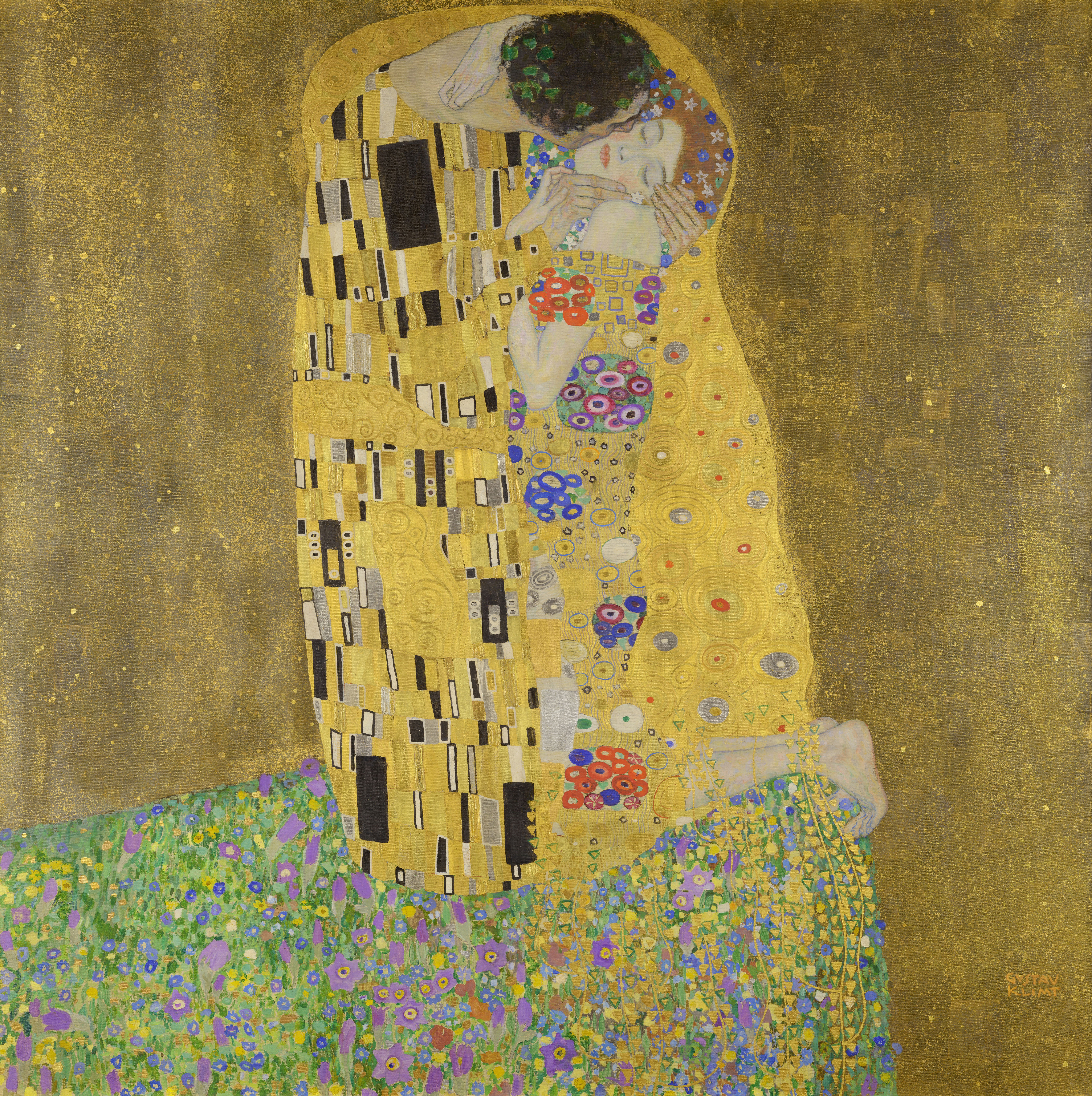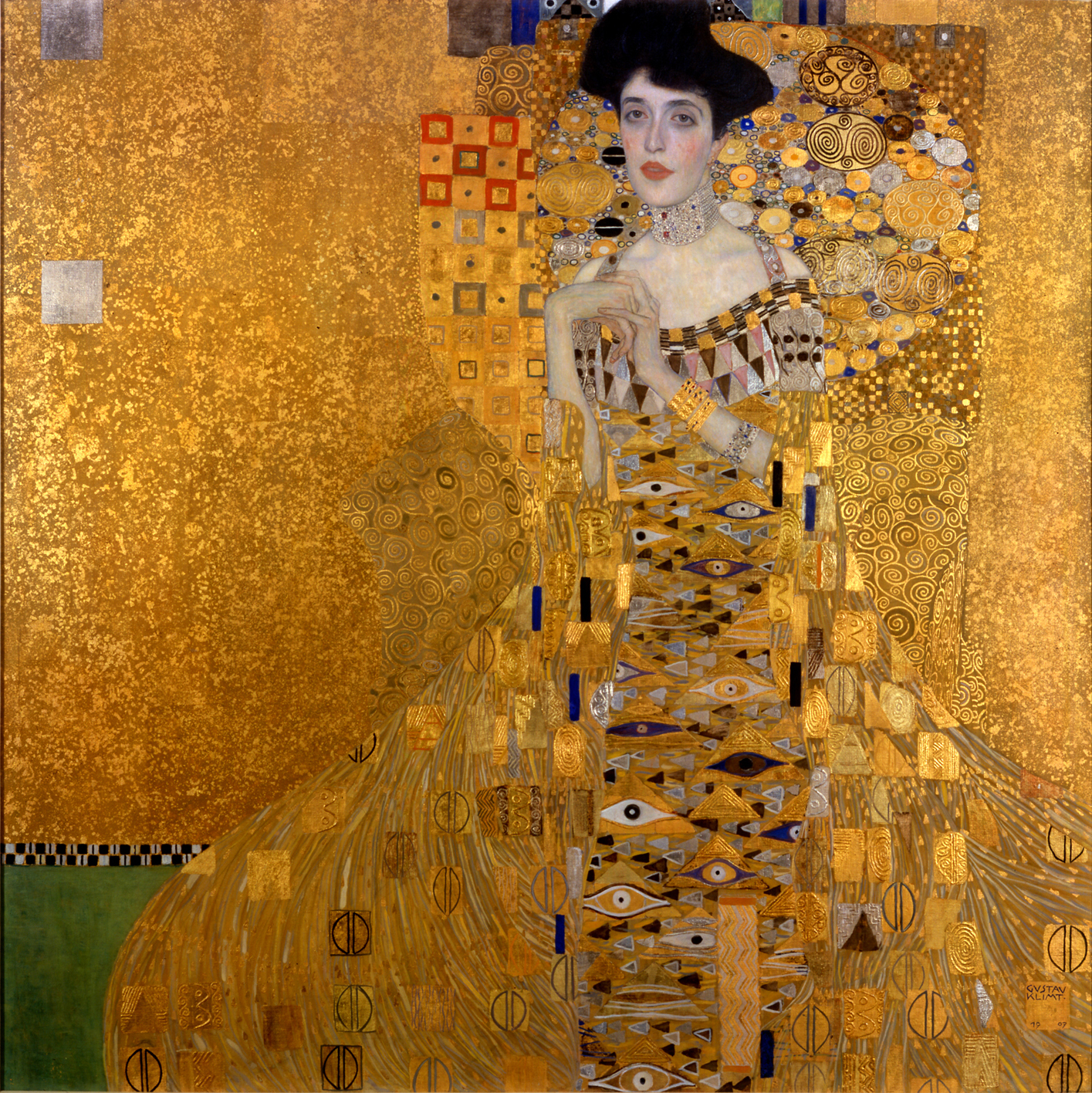Gustav Klimt: Gold, Grids & the Modern Portrait (Vienna 1900 Made Clear)
Why Klimt still stops us in our tracks
If you’ve ever stood before The Kiss and felt as if the surface were made of light, that’s no accident. In turn‑of‑the‑century Vienna, Gustav Klimt fused shimmering metal leaf with flat pattern and graceful figures to create images that feel at once ancient and absolutely modern. As a founder of the Vienna Secession, he helped shift art from polite historical scenes to designed experiences—wall‑sized cycles, editorial layouts, and portraits that act like icons of the new urban self. For background on that break with tradition, see our primer on the Vienna Secession.

Origins and turning points
Klimt trained within a craft‑rich, decorative world: murals, ceilings, and theater settings. Early success brought him major commissions, but the University of Vienna ceiling paintings—bold allegories of Philosophy, Medicine, and Jurisprudence—sparked public backlash. Klimt withdrew from state projects and turned to private portraiture and ambitious exhibition work. That pivot opened the door to the “gold period,” where precious materials, allegorical narratives, and a near‑architectural sense of layout converge.
Klimt’s design grammar: what to look for
Gold as structure, not just sparkle
Gold isn’t garnish; it’s architecture. Klimt handles metal leaf like little tiles—mosaics that bracket faces and hands with fields of pattern so the human presence gleams even more clearly.
Pattern vs. figure
Backgrounds become carpets of spirals, checks, eyes, and florals; the figure, modeled with soft tonal transitions, sits against those flat planes like a relief. The tension between living flesh and abstract fabric is the drama.
From surface to system
Klimt’s exhibitions were choreographed experiences, and the Secession’s magazine Ver Sacrum cultivated a modular page logic that feels like a proto‑grid. Think of it as ornament managed by structure—the reason these works still feel at home in modern design culture.
Four short case studies
The Kiss (1907–08)
The 180×180 cm square reads like a golden stage. A tessellated mantle wraps two figures; circular “blossoms” counter a field of angular rectangles; the couple leans toward a precipice that never quite threatens. Part tenderness, part geometry lesson.
Adele Bloch‑Bauer I (1907)

Often nicknamed “The Woman in Gold,” this portrait turns dress into architecture—recurring eyes, spirals, and rectangles lock the surface while Adele’s face and hands hover luminous and calm. The result: a modern icon, not a society likeness.
Beethoven Frieze (1902)

Painted for the Secession’s legendary “Beethoven Exhibition,” the frieze threads longing, struggle, and ecstatic harmony across an enveloping wall cycle—what the Secessionists called a Gesamtkunstwerk (total work of art). It’s installation, graphics, and allegory in one sweep.
Death and Life (1910–15)

On one side, a wrapped figure of Death; on the other, a cluster of bodies—newborn to elderly—floating in patterned cloth. Klimt’s ornament holds the group together like a quilt of time, with compassion rather than shock.
Influences and cross‑currents you can actually spot
Japan in Vienna: flatness and pattern
Vienna around 1900 adored Japanese prints. Their flattened space and decorative rhythms helped artists think of the picture as a designed surface. For how that language works, see our guide to Ukiyo‑e.
Symbolist surface thinking
Across Europe, groups like Les Nabis argued that color and pattern could carry meaning on their own. That “picture‑as‑surface” mindset is a perfect prelude to Klimt’s gold period—start with our explainer on Les Nabis.
Craft to total design
Klimt’s world overlapped with interiors, furniture, and textiles. The Arts & Crafts ideal—ethics plus materials—fed the Secession’s rooms and objects. For a concise bridge from workshops to early modern design, visit our Arts & Crafts guide.
Women, fashion, modern life
Klimt’s portraits helped invent a modern visual language for women of his circle—patrons, artists, and tastemakers. Fabrics, jewelry, and pose speak as loudly as likeness; pattern becomes voice. The point isn’t pedigree; it’s presence, staged with care and intelligence.
From ornament to systems: why designers still care
Look past the shine and you’ll notice discipline. Borders, bands, and panels behave like layout modules; patterns are placed, not poured. That “managed ornament” quietly predicts later twentieth‑century structure and grid culture. If you want to compare how geometry is disciplined differently across movements, our side‑by‑side primer on De Stijl vs Constructivism gives you a clear framework.
Where to see Klimt today
Plan a trip? A practical summary for one essential stop: the Upper Belvedere displays The Kiss—crowds are real, but so is the glow. For logistics and viewing tips, a concise guide is available here.
Spotter’s checklist for the gallery
- Look for the contrast: soft flesh vs. crisp pattern.
- Find the framing: bands, borders, or blocks organizing the field.
- Track recurring forms: spirals, eyes, checkers, blossoms.
- Notice how gold shapes space—like mosaic mortar and light.
- Ask what the fabric is “saying” about the sitter—status, temperament, mood.
FAQs
- Why did Gustav Klimt use so much gold leaf?
- Gold let Klimt build a modern “icon”—a reflective, mosaic‑like surface that frames faces and hands. It nods to Byzantine mosaics (think Ravenna) while feeling utterly contemporary in a city obsessed with design.
- What is Klimt’s “Golden Phase”?
- A run of works from the first decade of the 1900s in which Klimt relies on gold and silver leaf, patterned fields, and a balance of flat design with modeled figures.
- Where is The Kiss?
- At the Upper Belvedere in Vienna.
- What does the Vienna Secession motto mean?
- “To every age its art, to art its freedom” — a statement that artists should shape their own present, not copy the past.
- What is a Gesamtkunstwerk and how does it relate to Klimt?
- It’s a “total work of art.” Klimt’s Beethoven Frieze was created for a Secession exhibition designed as one coordinated experience—architecture, sculpture, and painting working together.
- Are Klimt’s images public domain?
- Klimt died in 1918; reproductions of many works are in the public domain. Museums may have image policies, but the underlying artworks are typically PD in many jurisdictions.
Further reading (archival & independent)
- Digitized runs of Ver Sacrum (1898–1903), University of Heidelberg: browse the archive
- Independent overview, The Vienna Secession — Gustav Klimt: artist page
Image credits (text only): Public Domain images via Wikimedia Commons; artworks in the collections of the Belvedere, the Vienna Secession (installation), Neue Galerie New York, and the Leopold Museum.

0 comments